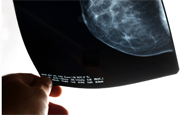Superior clinical performance for digital breast tomosynthesis-guided vacuum-assisted biopsy
TUESDAY, March 10, 2015 (HealthDay News) — Clinical performance of digital breast tomosynthesis (DBT)-guided vacuum-assisted biopsy (VAB) is superior to that of prone stereotactic (PS) VAB, according to a study published in the March issue of Radiology.
Simone Schrading, M.D., from the University of Aachen in Germany, and colleagues compared clinical performance of DBT-guided VAB with that of PS VAB using data for 205 patients with 216 mammographic findings suspicious for cancer. Patients were scheduled to undergo mammography-guided VAB. One hundred fifty-nine patients with 165 target lesions underwent PS VAB and 46 patients with 51 target lesions underwent DBT VAB.
The researchers found that technical success was achieved in 100 and 93 percent of lesions with DBT VAB and PS VAB, respectively. DBT VAB was performed successfully in one of 11 lesions in which PS VAB failed. The mean time to complete VAB was 13 ± 3.7 minutes and 29 ± 10.1 minutes for DBT VAB and PS VAB, respectively (P < 0.0001). Reidentifying and targeting lesions took longer during PS VAB than during DBT VAB (P < 0.0001); while tissue sampling took about the same time (P = 0.067). Compared with PS VAB, significantly more uncalcified target lesions were biopsied with DBT VAB (P < 0.0002).
“Because DBT VAB allows use of the full detector size for imaging and provides immediate lesion depth information without requiring triangulation, it facilitates target lesion reidentification and sampling of even low-contrast targets, such as uncalcified masses,” the authors write.
Full Text (subscription or payment may be required)
Copyright © 2015 HealthDay. All rights reserved.








